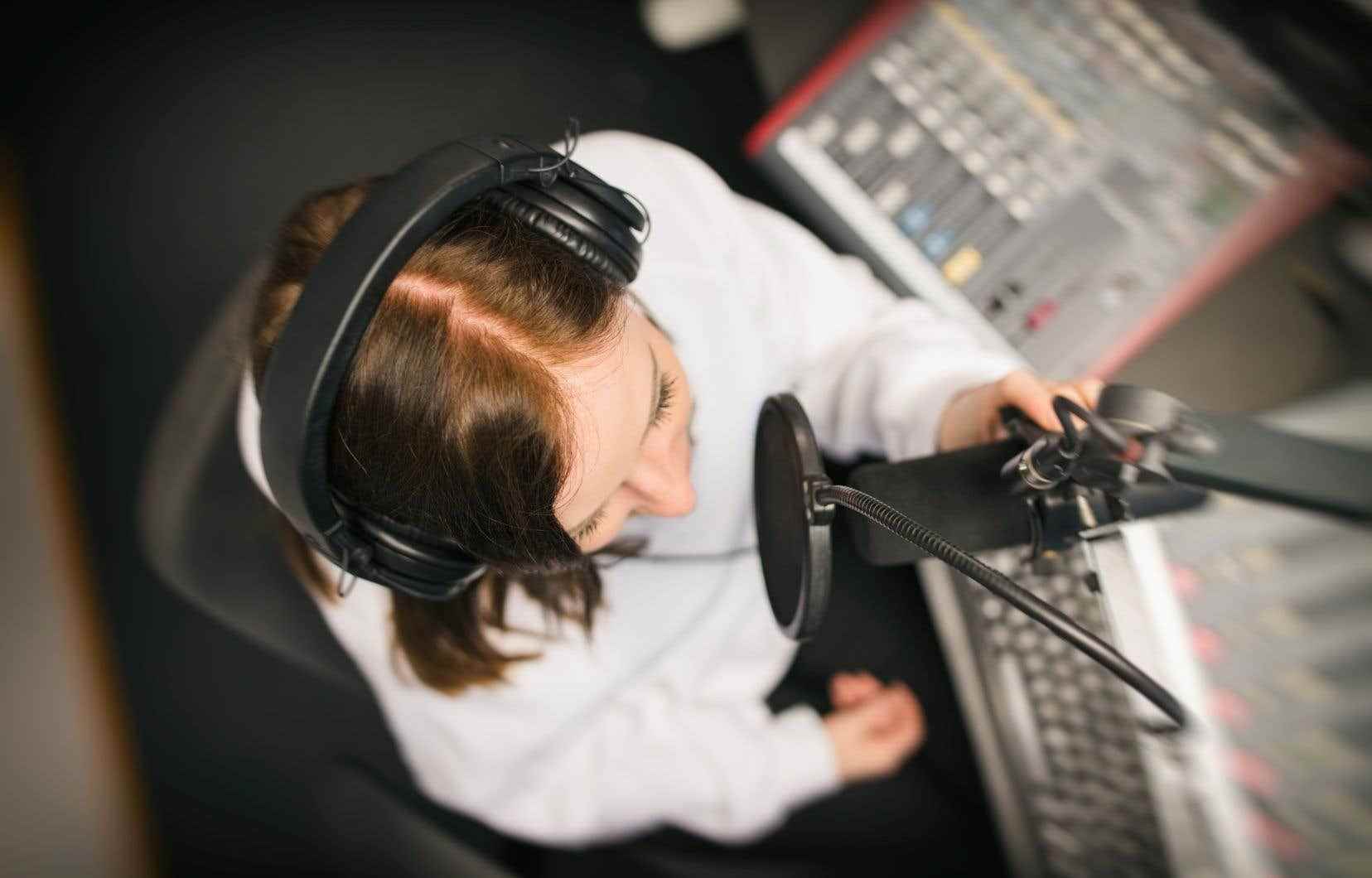On the occasion of the 100th anniversary of French-language radio in North America, The duty explores this medium in transformation.
Just before the telephone interview, in her parked car, Léa Compartino was listening to her colleagues from 95.7 KYK, a “musical and connected station in Saguenay–Lac-Saint-Jean”, according to the promotional formula of the Cogeco group. Mme Compartino has worked as a journalist for KYK since graduating this spring from the Graduate School of Media Art and Technology (ATM).
From school benches to a career that takes off, from student to successor, the 20-year-old young woman really wasted no time. “I come from Saguenay, so choosing the ATM was even easier for me,” she says. For me, radio is a great way to find my colour, to express myself and to have a direct impact on people’s lives, because it’s a local medium. »
Another case, same profile: that of Thomas Gauthier, also from the class of 2022. He comes from Alma, he is a radio graduate, and like his colleague Léa, he was hired as soon as his end-of-studies internship was completed. Since Monday, he is part of the morning team of BLVD 102.1 FM, “rock station” of Quebec. He reads the news and talks with his colleagues on the air. He will also be on a similar show at the weekend. “The station looks for young people and puts them on the air,” said the 19-year-old. I am so happy to have chosen this branch and so happy with my training. I chose to study radio because I believe it is the best medium for giving information, commenting on it and entertaining. Young people my age can be attracted to this medium if we choose subjects that affect them and if we know how to talk to them about it. »
The old radio, which is celebrating its commercial centenary in Quebec, therefore attracts young people again and again as transmitters and receivers of content. In any case, at the ATM, the popularity of the very old mass media is not waning.
Versatile training
The media and communications training center founded at the same time as the Cégep de Jonquière in 1967 is recognized as a higher education institution in 2021. More than 10,000 young people have received training there. The honor roll of graduates could fill a large class, with stars like Alain Gravel or Paul Larocque in the front row.
“The training we give now is different from the one I followed, says Blaise Gagnon, from the 1984 radio class. New students learn to use social media, including writing headlines. Mr. Gagnon worked for fifteen years at Radio-Canada and earned a bachelor’s degree in education before returning to the ATM as a radio and journalism teacher. He is now coordinator of the Department of Communication Techniques in the Media. “Our strength is versatility,” he explains. Our graduates are capable of doing everything and doing everything well when they start a professional internship. »
After the first session, an initiation to radio, journalism and advertising, the student chooses his more specialized course in one of these three paths. The audio training continues in a real real station (ATM Radio 103.5) broadcasting in Jonquière and on the Web. Classes do animation, put on the air, prepare information and even advertisements.
“When I give a tour of the premises with future students and their parents, I like to say that we are probably the only CEGEP where students come to class at half past five in the morning,” says Mr. Gagnon. The morning crew goes on the air at 6 a.m. The lineup rolls all day. »
The audio is screened
From this training, between 30 and 35 young people graduate in radio each year. Four out of five find a job right away. By following their careers and from his vantage point, Professor Gagnon can track the evolution and changes in the sector from year to year. He quotes the podcast, of course. He has just spent a week in Casablanca (where the ATM offers training), and he discussed podcasting there with the professionals of Atlantic Radio, based in Morocco, who would like to get started.
Mr. Gagnon also points out that talk radio, generalist or specialized (sports, for example), is experiencing a resurgence at the same time as musical programming is giving way to streaming services. He sees that the reign of comedians and humor on the air seems to be coming to an end.
“We’re back to a little more serious content,” he says. Same The evening is (still) younga show of varieties, has just left the antenna of Radio-Canada. We are more into the content now. »
Blaise Gagnon also talks about the trend towards broadcasting radio shows on Facebook Live or on YouTube. Audio meets video. “I liked to cling only to the voice. Orson Welles said, “I prefer radio to movies because radio has a bigger screen.” In the sense that the listener can imagine whatever he wants. The imagination works much more when you receive sound, and only sound. »
